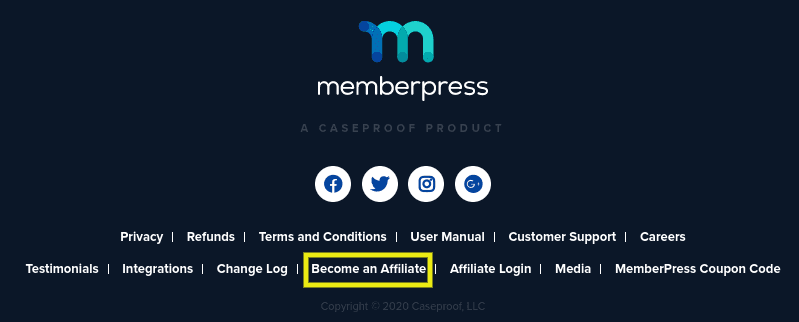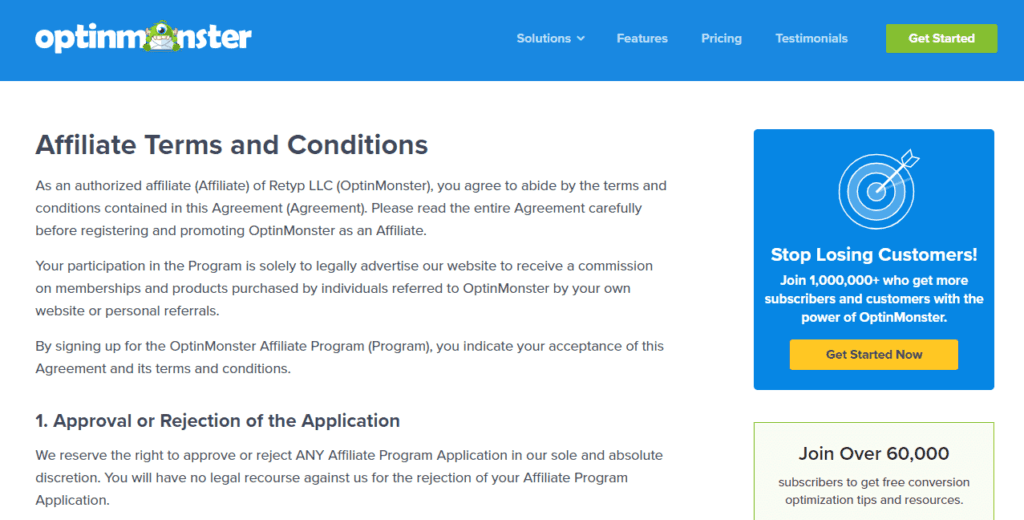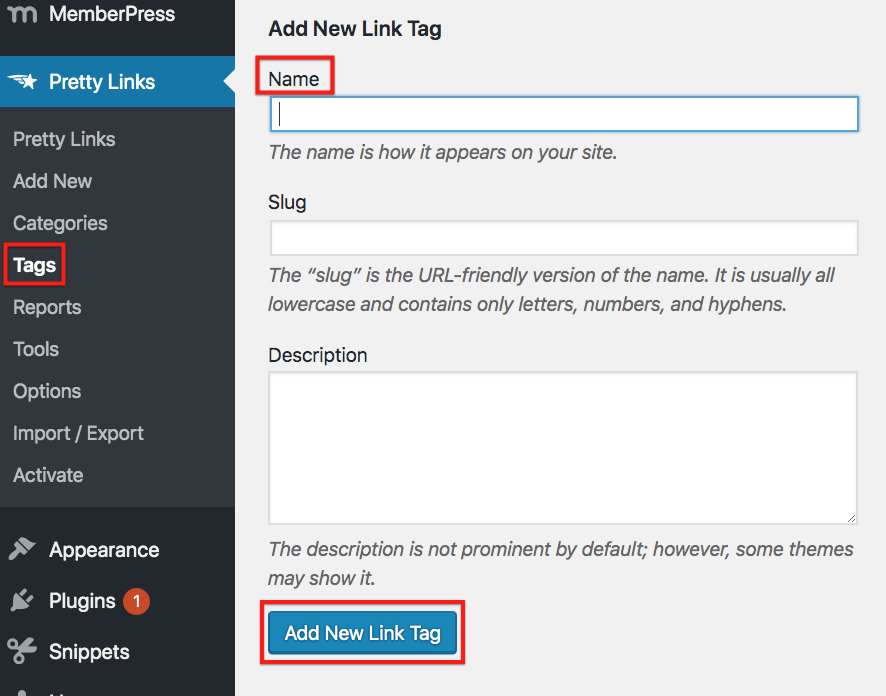Table of Contents
So you're running an affiliate program on your site, but have you considered flipping the switch and earning some extra dough from your business's blog? Turn your blog into a sweet recurring pay packet with this guide on how to use affiliate marketing in your blog.
You've seen your affiliates write passionately about your products and rake in commissions as your sales soar.
Dedicated affiliate marketers who pitch is just right have even earned themselves the big bucks to ditch their 9-5.
Watching their magic at work begs the question: can you make this sorcery work for you and your business?
Maybe you're already running a blog for your business for SEO purposes and want to leverage it for a bit of extra cash for your business. Or perhaps you're interested in starting a side-hustle and making affiliate marketing work for you personally.
Whatever your reasoning, bloggers can (and have) hit the big time with affiliate marketing, and it's not complicated to get started.
All it takes is time, effort, a pinch of luck, and, of course, the know-how to set yourself up on the right path.
And that's where we come in.
In this article, we'll talk affiliate marketing for bloggers and how to get started.
You'll learn how to turn your blog into a cash-making machine and how you can increase your business's bottom line with a few simple changes.
Let the knowledge transfer commence!

4 Steps To Starting Your Affiliate Blog
Step 1: Choose Your Products
It's critically important that you choose to represent products you can really get behind, and that are relevant to an industry you want to write about.
Your credibility is on the line and it's important to always prioritize value for your readers if you want to be a successful affiliate marketer.
Revise Your Existing Content
If you're already running a blog for your business, you probably already know these products intimately as they relate to your own industry.
For example, let's say you run photography classes online. You've probably already written several blogs that include advice about physical products lenses, tripods, and gimbals, etc.
You've probably also got plenty of opinions on the best editing software. These are all opportunities for affiliate marketing.

Think About Your Interests
If you're starting a blog from scratch, the most important thing to consider is whether you can sustain your interest in that industry over time.
You'll need to write in-depth about the products and the industry, and regularly update your blog. An AI writing tool will help you generate compelling and consistent content, making it easier to keep your blog fresh and engaging. For your blog to go the distance and sustain its success, you need to write about something that genuinely interests you.
You also need to choose products you can happily promote to others. If you can write passionately and persuasively about a product, you'll be more likely to drive sales for those products, and therefore get better commissions.
Research Affiliate Programs In Your Industry
Now you should have a list of products to research. Check to see if your preferred brands in that industry have affiliate marketing programs. Not all will, but you'll find that it's more common than you might think.

Brainstorm & Research Related Industries and Products
Hopefully, you have a healthy list of affiliate programs for products that directly relate to your industry.
But don't stop there! Think about other products your audience will find useful.
Let's use the photography classes example again. You could write a blog post about the best locations for nature photography, and partner with travel agencies or tour operators that offer specialized photography trips.
By promoting these trips, you not only provide valuable information to your readers but also earn a commission for every booking made through your referral.
Furthermore, think about the lifestyle of your target audience. A photographer might also be interested in coffee table books featuring renowned photographers, or even ergonomic chairs and desks for their editing workspace.
The possibilities are endless when you start to think outside the box.

Step 2: Set Up as an Affiliate
With your brands picked out, it's time to set yourself up as an affiliate!
Some affiliate programs have an application approval process. In these instances, you may need to work on your blog and social media presence to meet their requirements. Other affiliate programs, however, let you start from scratch.
Take some time in this step to read through all the information provided by the affiliate program. You'll want to pay attention to:
- Payment amounts
- Payment schedule
- Legal obligations
- Restrictions
Be sure to look at the information carefully and follow the steps needed to become an affiliate partner. This can be a lengthy process depending on who you're doing business with.

As you know, affiliate programs want your help in selling their products. Even if it takes some time, they'll make the setup process worth your while in the end.
The commission you earn per sale will depend on the program and the product. The more value the product has, the higher the commission is likely to be.
Don't be surprised if their affiliate requirements and approval process look very different from your own.
Step 3: Promote The Products
With everything in place, it's time to turn your blog into a cash machine.
If you use Easy Affiliate to run your own affiliate program, you'll know that as an affiliate marketer, you are assigned a unique URL for linking to a brand or product.
Use these links effectively and ethically in your blog posts. Your aim is to use links strategically to maximize click-throughs while enhancing the experience for your readers.
Affiliate Link Use Best Practices
Optimize Placement
While it's essential not to overload your content with links, strategic placement can increase click-through rates. Consider placing links at the beginning, middle, and end of your content.
Include a Call-To-Action (CTA)
Encouraging readers with a clear CTA boosts engagement and click-through rates, guiding them on the desired action to take with your affiliate link, whether it's to “Learn More,” “Buy Now,” or “Check Out the Deal.”

Relevance is Key
Don't shove your affiliate link just anywhere. Ensure that the products or services you're promoting are relevant to the specific content of the post.
Things like product reviews allow you to go in-depth on a product, which provides plenty of opportunities to drop in your affiliate link.
Take some time to look through Google for investigational keywords. Words you'll come across frequently include:
- Best
- Review
- Compare
- Alternative
These words help you to figure out the types of posts to create.
Avoid Overloading
Don't saturate your content with affiliate links. It can make your content seem insincere and can be off-putting to readers.
Use Nofollow
If you repeatedly use the same link across your blog it may affect your SEO rating.
Adding the “nofollow” attribute to affiliate links signals to search engines that the link is commercial, not an organic endorsement, helping maintain your site's SEO integrity.

Use a Link Cloaking Tool
There are two main reasons for using a link cloaking plugin:
- Scammers use bots to look for affiliate links in blogs and then attempt to hijack them. Link cloakers hide these affiliate links from bots.
- Affiliate links are long, awkward, unbranded and frankly, ugly. Link cloaking can improve the user experience by making them more appealing and shareable.
Some affiliate programs, like Amazon, don't permit cloaking their affiliate links, so check your affiliate agreement before using a link cloaking tool. But overall, link cloaking is considered best practice amongst affiliate marketers.
Include an Affiliate Disclosure
Be transparent about the use of affiliate links in your blog. Include an affiliate disclosure explaining to your readers that your blogs contain affiliate links.
Choosing a Link Cloaking Tool
Link cloaking plugins include other features and benefits that can help you as an affiliate marketer.
Here are some advanced features from two of the most popular link cloaking tools: Pretty Links and ThirstyAffiliates.

Auto-Linking
Both these tools provide automatic keyword linking to convert specific keywords into affiliate links across your site. This is really useful if you already have a lot of blog content and want to save time manually placing links throughout your site.
Advanced Reporting
Both plugins also offer detailed affiliate marketing reports to monitor link performance so you can see what strategy works for you.
As you start to see results, take some time to see what brought people to you. You can use Google Analytics to see exactly what keywords people used to find your site.
Organize Links
Both tools enable you to sort affiliate links using categories. When you're juggling multiple affiliate programs and many more unique URLs, this features comes in super handy.
Group links by product, program, platform, campaign, or any other criteria that help keep everything organized and accessible.
Pretty Links has the added feature to sort links further by tags, adding another dimension to your link organization strategy.

Schedule Links
ThirstyAffiliates lets you schedule affiliate links in advance. This is particularly useful for time-sensitive promotions. Put a start and end date on your affiliate links
to ensure they're only active during the promotion period. This way, you can plan your campaigns ahead of time and ensure that outdated promotions don't confuse or mislead your readers.
Smart Uncloaking
ThirstyAffiliates offers a unique feature that automatically uncloaks specific links, which is essential for those who use Amazon affiliate links.
As we've already mentioned, Amazon's terms and conditions prohibit link cloaking, so this feature ensures you remain compliant by revealing the original Amazon link when necessary.
Step 4: Get Paid – Repeat

As you develop more posts on your website, the chances to make sales will increase.
As long as you're following the legal obligations of the platform, you'll enjoy regular payouts. Keep seeking new products you can promote to maintain a steady flow of income.
Also, make sure there's a common thread running between the products you promote.
If you decide you'd like to branch out into new territory, your best bet is to start a new blog.
This will help to maintain your position as an authority in one subject and will prevent your blog from looking like an affiliate marketplace.
Final Thoughts
Blogging is one of the easiest and best ways to start on the path to earning some passive income for you or your business.
Just keep repeating these four steps and make the most of the tools at your disposal, and you'll keep making money.
Take a look at ThirstyAffiliates and Pretty Links to maximize the effectiveness of your affiliate links.
It's that simple! Expand on the different steps, and your rewards will be even greater.
Most importantly, have fun! You'll find that the more engaging your content, the higher returns you'll enjoy.
Do you have questions about how to get started with affiliate marketing for bloggers? Ask away in the comments!
If you liked this article, follow us on Twitter, Facebook, and LinkedIn. And don't forget to subscribe to our newsletter



Fantastic article on affiliate marketing for bloggers! I appreciate how this piece breaks down complex concepts into digestible and actionable steps, making it easier for bloggers at any level to understand and implement effective affiliate strategies. The emphasis on ethical practices and focusing on products that truly benefit readers is particularly commendable. It’s clear that building trust with the audience is key, and your tips on how to achieve this are spot-on. I also found the section on optimizing content for conversion very insightful. This post is a valuable resource for any blogger looking to dive into affiliate marketing or enhance their existing efforts. Thanks for sharing your expertise!
This is such a comprehensive guide! As a new blogger, I’ve been overwhelmed with the amount of information out there on affiliate marketing, but this article breaks it down in a way that makes it easy to digest. I particularly liked the section on choosing the right affiliate programs – I’ve definitely learned that relevance is key! Do you have any recommendations on how to track which affiliate links perform best? Thanks!
Nice and good Blog Post like it 🙂 and it helps me much thanks.
Great post! It’s really inspiring to see how affiliate marketers can turn their passion into a profitable venture. I’ve been thinking about leveraging my own blog for affiliate marketing, and this post has definitely sparked some new ideas. The potential to earn extra income while helping promote quality products is exciting. Thanks for sharing these insights — definitely going to give it a try!”
Really helpful post! I’ve started building extra income streams online, and this content was spot on.
Wow, this is one of the most comprehensive guides I’ve seen on affiliate marketing for bloggers! The step-by-step breakdown makes it super easy for anyone to get started.
Thanks again for the valuable insights!
We’re glad you found it helpful, Shivam!